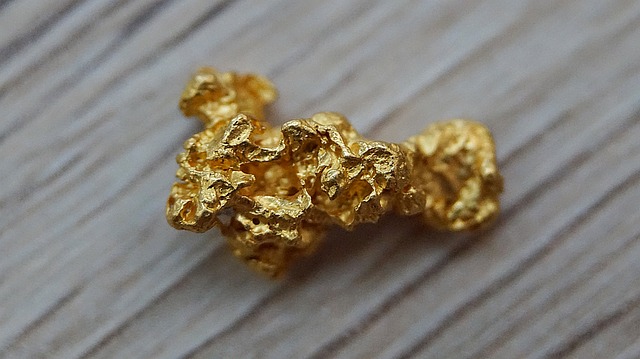
Considering a Gold IRA rollover for your retirement portfolio? It's a strategy to diversify investments with precious metals by transferring funds from existing accounts like 401(k)s, 403(b)s, Thrift Savings Plans (TSP), or traditional IRAs into a self-directed IRA that allows for gold investment. This move complements traditional stock, bond, and mutual fund holdings with tangible assets like gold and other precious metals. To do this, you must follow IRS guidelines on rollovers, which come in direct and indirect forms, with the direct transfer being the most straightforward method to avoid early withdrawal penalties. Eligible accounts for a Gold IRA rollover include Traditional or Roth IRAs, SEP, and SIMPLE IRAs (not Roth 401(k)s). It's crucial to consult with financial advisors or Gold IRA specialists to navigate the process correctly, considering the unique rules for each account type. A Gold IRA can offer a hedge against inflation and market volatility, potentially providing a more secure investment for retirement. Remember, precise timing and adherence to IRS regulations are key, especially if you're over 59 and a half and looking to avoid early withdrawal penalties. Proper planning is essential to maintain the tax-advantaged status of your rollover and to maximize the benefits of investing in gold within your retirement portfolio.
Exploring the intricacies of a Gold IRA rollover can be a prudent step for investors seeking to diversify their retirement portfolio with precious metals. This comprehensive guide elucidates the essential eligibility requirements and procedures involved in executing a Gold IRA rollover, ensuring compliance and maximizing tax advantages. From understanding the role of a trustee to comparing traditional IRAs, this article breaks down the legal framework, market considerations, and practical steps necessary for a successful transition. Whether you’re a seasoned investor or new to retirement planning, this resource provides valuable insights to help you navigate the process with confidence.
- Understanding Gold IRA Rollovers: An Overview
- Eligibility Criteria for Gold IRA Rollover
- The Types of Accounts Eligible for Gold IRA Rollover
- The Process of Executing a Gold IRA Rollover
- Age and Tax Considerations in Gold IRA Rollovers
Understanding Gold IRA Rollovers: An Overview

When considering a retirement portfolio, a Gold IRA can be an attractive option for those seeking to diversify their investments with precious metals. A key aspect of this investment strategy involves the ability to roll over funds from existing retirement accounts into a Gold IRA. This process, known as a Gold IRA rollover, allows individuals to transfer pre-tax or after-tax dollars into a self-directed IRA that includes gold and other precious metals, thus expanding their investment horizons beyond traditional stocks, bonds, and mutual funds. To be eligible for a Gold IRA rollover, one must adhere to specific guidelines set forth by the Internal Revenue Service (IRS). Typically, an individual can roll over funds from a 401(k), 403(b), Thrift Savings Plan (TSP), or another traditional IRA into a Gold IRA. The process of initiating a rollover involves requesting a direct transfer from the financial institution managing the current retirement account to the custodian of the new Gold IRA, ensuring compliance with IRS regulations and avoiding early withdrawal penalties and taxes. It’s crucial to understand that there are distinct types of rollovers: direct and indirect. A direct rollover is when the funds are transferred directly from the old retirement account to the new Gold IRA, whereas an indirect rollover involves the financial institution sending the funds to you, which you then have 60 days to deposit into the new Gold IRA. Precise adherence to these rules is necessary to maintain the tax-advantaged status of your retirement savings and to avoid any inadvertent penalties or taxes that could arise from mishandling the rollover process. Understanding the nuances and requirements of a Gold IRA rollover is essential for anyone looking to incorporate gold into their retirement planning strategy.
Eligibility Criteria for Gold IRA Rollover

Investors seeking to diversify their retirement portfolios with precious metals may find a Gold IRA rollover an attractive option. To be eligible for this financial maneuver, individuals must meet specific criteria. A Gold IRA rollover allows for the transfer of funds from an existing tax-advantaged retirement account, such as a Traditional IRA or a Roth IRA, into a self-directed IRA that permits investment in gold and other precious metals. The eligibility requirements are straightforward: you must have an existing tax-advantaged account with sufficient funds to cover the rollover amount, and your IRA custodian must offer precious metals as an investment option. Additionally, the IRS stipulates that the funds rolled over maintain their tax-deferred or tax-exempt status during the transfer. Prospective investors should consult with both a financial advisor and a Gold IRA specialist to navigate the rollover process, ensuring compliance with all IRS regulations to avoid penalties or taxes on the transaction. It’s crucial to understand that not all retirement accounts are eligible for rollover; traditional 401(k)s, SEP IRAs, and SIMPLE IRAs typically qualify, while Roth 401(k)s do not. Understanding these Gold IRA rollover eligibility criteria is essential for a seamless transition into a precious metals-backed retirement strategy.
The Types of Accounts Eligible for Gold IRA Rollover

401(k) plans often serve as a foundational source for funding a Gold IRA through a rollover. Individuals looking to diversify their retirement portfolio with precious metals can roll over funds from their existing 401(k) accounts into a self-directed Gold IRA. This process allows investors to transfer pre-tax or after-tax dollars into a Gold IRA, where the funds can be invested in gold coins, bullion, and other approved precious metals. Another type of account eligible for a Gold IRA rollover is a traditional Individual Retirement Account (IRA). Similar to a 401(k), a traditional IRA holder can transfer their savings into a self-directed Gold IRA, thus gaining exposure to gold as part of a retirement strategy. Additionally, Roth IRAs are also eligible for rollovers into Gold IRAs, provided the account holder meets the specific criteria set by the IRS for Rollover IRAs. The process involves opening a new Gold IRA account and then transferring the funds directly from the Roth IRA to the new account within a stipulated timeframe to ensure tax-deferred growth. Lastly, SEP and SIMPLE IRAs can also be rolled over into a Gold IRA under certain conditions. These accounts are designed for self-employed individuals or small business owners and their employees, and they too can be converted into a Gold IRA if the rollover is handled in accordance with IRS regulations. It’s crucial for investors to understand the specific rules and procedures associated with each account type to ensure compliance and maintain the tax-advantaged status of their rollover. Consulting with a financial advisor or a precious metals expert is recommended to navigate the Gold IRA rollover process effectively.
The Process of Executing a Gold IRA Rollover

When considering the diversification of your retirement portfolio with precious metals, understanding the process for executing a Gold IRA rollover is paramount. The rollover mechanism allows for the transfer of funds from an existing retirement account, such as a 401(k) or traditional IRA, into a self-directed Gold IRA without incurring immediate tax penalties. This process involves two types of rolls: a direct rollover and an indirect (or 60-day) rollover. In the case of a direct rollover, the funds are transferred directly from the old account to the new Gold IRA custodian, streamlining the transaction and minimizing administrative overhead.
Conversely, an indirect rollover involves receiving the funds from your previous retirement account and then depositing them into your Gold IRA within 60 days. It is essential to adhere strictly to this timeline to avoid the rollover being treated as a taxable distribution. Both methods require careful coordination with your current plan administrator, the new Gold IRA custodian, and possibly a trustee to ensure compliance with IRS regulations. Throughout the process, maintaining accurate records and understanding the gold IRA rollover rules is crucial to navigate this transition smoothly. The rollover must adhere to annual contribution limits and prohibited transaction restrictions to preserve the tax-advantaged status of your retirement savings within a Gold IRA.
Age and Tax Considerations in Gold IRA Rollovers

When considering a Gold IRA rollover, individuals must take into account their age and the tax implications involved. As per the Internal Revenue Service (IRS) guidelines, those who are 59 and a half years old or older have more leeway in accessing funds from their traditional IRA without incurring early withdrawal penalties. This age threshold is significant because it aligns with the rule that allows for penalty-free distributions from traditional IRAs, which can be a point of consideration when deciding to roll over funds into a Gold IRA. For those under 59 and a half, it’s imperative to understand the tax considerations surrounding a rollover, as distributions from traditional IRAs to a Gold IRA are generally subject to income taxes and may incur an additional 10% penalty if taken early. A Gold IRA rollover must be executed properly to avoid such penalties, ensuring that the funds are directly transferred from the existing retirement account to the new Gold IRA, thereby preserving the tax-advantaged status of the investment. This direct transfer, also known as a trustee-to-trustee transfer, is a key component in the rollover process and is crucial for maintaining the tax benefits associated with retirement savings. Individuals approaching or at the age of 59 and a half should explore the options available for a Gold IRA rollover to capitalize on the potential benefits that precious metals can offer as part of their diversified investment portfolio.
When considering the transition of retirement funds into a Gold IRA, it’s crucial to navigate the specific eligibility requirements and understand the types of accounts that permit such a rollover. This guide has delineated the essential aspects of Gold IRA rollovers, from the overview of the process to the detailed criteria that make an individual or account eligible. Whether you’re looking to diversify your retirement portfolio with precious metals or simply seeking to understand the mechanics of these transactions, the information provided here serves as a comprehensive resource for prospective investors. By considering the account types and age restrictions alongside tax implications, you can make informed decisions that align with your financial goals. Remember that a Gold IRA rollover is a strategic move that can offer stability and security in your retirement planning, provided it’s executed according to the stipulated guidelines.







